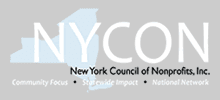BY THE NUMBERS
2014 Decentralization Awards: Herkimer, Madison, Oneida Counties:
26: Number of programs at least partially funded through decentralization grants.
$1,600: Larg...
» Read more
Sara Tracey
Posted Feb. 24, 2014 @ 5:00 am
Posted Feb. 24, 2014 @ 5:00 am
Funding for the arts in Central New York might not be as accessible as it is for groups in New York City. But grants, such as those recently gifted by CNY Arts, are helping keep local arts programming afloat.
“The majority of arts funding in Central New York is delivered through decentralization grants,” said Steve Butler, executive director of CNY Arts. “We’re hoping this is the beginning of a trend of higher decentralized funding.”
This year, CNY Arts handed out about $160,000 – the most money its been able to dole out in five years – in decentralized grants to schools, individual artists and organizations within its six-county net. Groups within Herkimer, Madison and Oneida counties received nearly $50,000 of that.
Organizations in Manhattan and New York City often get funding directly from the state, and having CNY Arts as a filter can localize more money, Butler said.
Since Herkimer, Madison and Oneida counties were integrated in the New York State Council on the Arts, more money has been doled to programming:
ä 2012: $139,540 given, with applications requesting $249,414.
ä 2013: $142,100 given, with applications requesting $280,590.
ä 2014: $159,950 given, with applications requesting $231,981.
Sculpture Space in Utica knows the importance of grants. The people the collective brings to the area through its residency program aren’t just artists: They’re outreach.
“It’s a funny thing, we want to give them the time to be productive – we don’t want to be intrusive – but they’re also our biggest asset in getting out to the community,” said Executive Director Monika Burczyk. “They’re cultural ambassadors for the Mohawk Valley.”
Most of the community outreach art programs in Utica with these national and international sculptors require money. The $4,000 grant distributed by CNY Arts to Burczyk’s and other art ventures help make such programs possible.
Between 10 and 20 percent of the total funding given in grants are geared toward arts education in schools, said Elizabeth Lane, grants coordinator for CNY Arts. Though some schools in the Mohawk Valley – such as the Mount Markham Central School District and Madison-Oneida BOCES – did receive funding this year, she said she would like to see more applications.
“I think it’s hard for the schools to find artists to work with,” a requirement for those grants, she said.
Many of the applications, such as those from the Oneida Public Library and the village of Herkimer, are vetted to community arts programs, Lane said.
Originally, Sculpture Space received two decentralization grants, Burczyk said, but she added the second $2,100 grant was gifted back to CNY Arts.
“We told CNY they should give the money to one of the individual artists,” she said. “We really want to support individual artists.”
Read more: http://www.uticaod.com/article/20140224/News/140229800#ixzz2uTV0fJ62
























